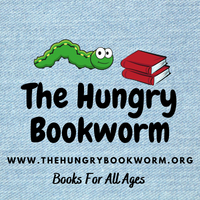Unbranded
Shoddy Cove Levin, Betty
Shoddy Cove Levin, Betty
Regular price
$8.95 USD
Regular price
$15.99 USD
Sale price
$8.95 USD
Unit price
per
Shipping calculated at checkout.
Couldn't load pickup availability
Product Description
While working with her family at Cosset Island Village, an historical replica for tourists of an early nineteenth-century village in New England, Clare helps two young runaways and learns about a mystery from the past.
From Booklist
Gr. 5-7. Levin weaves past, present, and a hint of the supernatural into this multithreaded tale of runaway children in different centuries. Clare chafes at being an unpaid, costumed "resident" at the reconstructed nineteenth-century settlement (where her mother works), until she meets Adam and May, half-sibs hiding out from relatives who would separate them. After Adam reluctantly enlists Clare's help in making contact with a possible rescuer, he reveals an old letter proving that the shelter where he and his half-sister are hiding once harbored fugitive slaves. Along with picturing day-to-day life in a busy tourist attraction, Levin fills in historical background about the Underground Railroad's early days and unravels a mystery from the 1830s involving the death of a slave hunter. To the modern plot with a startling twist at the end, she also adds several unexplained incidents, including encounters with eerily elusive, possibly ghostly strangers. It's all a bit of a jumble, but the themes and setting will intrigue young readers, and Clare, whose mother is an adoptee of Vietnamese-African American descent, has a refreshingly strong presence.
John Peters
Copyright © American Library Association. All rights reserved
About the Author
Betty Levin is the author of many popular books for young people, including
The Banished; Look Back, Moss; Away to Me, Moss; Island Bound; Fire in the Wind; and
The Trouble with Gramary. Betty Levin has a sheep farm in Lincoln, Massachusetts, where she also raises and trains sheepdogs. In Her Own Words...
"I started writing stories almost as soon as I began to read. They were derivative and predictable-as much a way of revisiting characters and places in books I loved as it was a means of self-expression. I don't remember when words and their use became important. In the beginning was the story, and for a long time it was all that mattered.
"Even though I always wrote, I imagined becoming an explorer or an animal trainer. This was long before I had to be gainfully employed. It wasn't until after I'd landed in the workplace, first in museum research and then in teaching, that I returned to story writing-this time for my young children. Then a fellowship in creative writing at the Bunting Institute of Radcliffe College gave me and my storymaking a chance. One affirmation led to another, and now there are books-and some readers.
"When I talk with children in schools and libraries, I realize that child readers are still out there. When they get excited about a character or a scene, a new dimension opens for them, a new way of seeing and feeling and understanding.
"Of course there is always one child who asks how it feels to be famous and to be recognized in supermarkets. I explain that the only people who recognize me are those who have seen me working my sheep dogs or selling my wool at sheep fairs. That response often prompts another query: Why write books if they don't make you rich and famous? I usually toss that question back at the children. Why do they invent stories? How does story writing make them feel?
"Eventually we explore the distinction between wanting to be a writer and needing to write. If we want to write, then we must and will. Whether or not we become published authors, we all have tales to tell and stories to share. Literature can only continue to grow from the roots of our collective experience if children understand that they are born creative and that all humans are myth users and storytellers."
FEATURES


